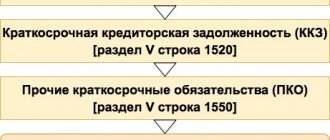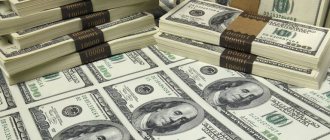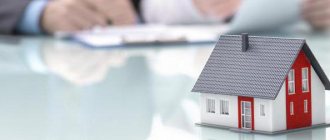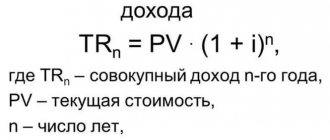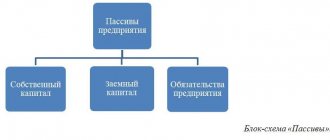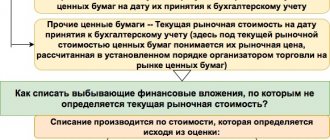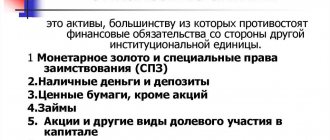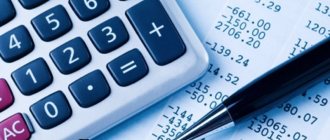Hello, Vasily Zhdanov is here, in this article we will look at short-term liabilities. Liabilities are usually called all financial sources from which the company receives funds. They are displayed in the account. balance sheet, the current form (OKUD 0710001) which was introduced by Order of the Ministry of Finance of the Russian Federation No. 66n dated July 2, 2010, as amended. with change from 2021. According to this form, liabilities include: capital, reserves, as well as long-term and short-term liabilities.
The last two liabilities may have another name, close to the one indicated, namely: long-term and short-term liabilities. The essence does not change from this. But in practice, you can equally often find both the first and second variants of their name.
Take our proprietary course on choosing stocks on the stock market → training course
Another nuance that should be noted is the identification of the two terms “liabilities” and “liabilities” in terms of borrowed capital. In fact, they are synonymous and also often appear in economic theory and practice.
Liabilities are classified according to different criteria. For example: by ownership (its own or borrowed capital), depending on who the company owes (wages, contractors), etc. The classification of liabilities most often used in practice is based on the urgency of their repayment.
| Liability group | Line-by-line distribution in the account. balance sheet | Examples |
| P1 (most urgent obligations) | Page 1520 | These obligations should be covered first, such as accounts payable, which are repaid within no more than 3 months. |
| P2 (short-term or short-term) | Page 1500 | The repayment period for these obligations cannot exceed a year. These are: debts to suppliers, wage arrears |
| P3 (long-term) | Page 1400 | Debts can be repaid within a period exceeding 12 months. The main types of such obligations are long-term loans with credits |
| P4 (permanent) | Page 1300 + 1530 + 12605 | They are not obligations and do not involve external payment. This includes your own and long-term borrowed capital. |
Liabilities grouped in this way are used in the financial analysis of the enterprise. In particular, when studying the liquidity of accounting. balance sheet, as well as to determine the financial solvency of the enterprise.
Balance sheet structure
Each part of the balance sheet groups assets and liabilities into sections. So, on the left side there are two sections - non-current and current assets, and the right side consists of three sections, separately combining capital and reserves, long-term as well as short-term liabilities.
In turn, the positions in each section are encoded with special four-digit codes established by Appendix No. 4 to Order No. 66n. Encryption of lines is necessary in reporting submitted to regulatory authorities - the legislator approved this procedure in order to systematize statistical data when generating information in general for an industry, region or country. A balance sheet compiled to review results within an enterprise may not contain codes - there is no need for them, but it is more convenient to generate a report and post accounting data, correlating them with the code number. Let's figure out how the current balance line codes are deciphered, what information is grouped in each of them, and how the indicators are formed.
Types of liabilities
The following are considered liabilities:
- mortgage;
- loans;
- credit cards;
- consumer loan taken for the purchase of expensive items, travel, etc.;
- all property (movable and immovable): apartment, car, household appliances, gadgets, etc. Everything that a person owns and uses in everyday life is considered liabilities;
- unprofitable business, since additional funds will be needed to close it;
- money borrowed. Even if money was lent without interest, it is still a liability, since it must be returned.
To better understand what a passive is, we can consider two examples:
- A man bought an expensive car. It appears to be a valuable purchase and could be considered an asset. However, as soon as the car leaves the showroom, it immediately loses about 20% of its price. The owner will have to pay insurance, buy gasoline, pay for repairs, etc. Consequently, in this situation, the car does not make a profit, but requires additional expenses.
- A man took out a mortgage and bought a house. The banker considers the purchased real estate an asset, and in his own way he is right. But the subtlety is that the house is an asset of the bank, but not the borrower. It makes no difference to the banker what the loan is for: to purchase a house, a yacht, or a luxury car. The bank will own this property until the borrower pays off the entire cost with interest. Thus, the acquired property is a liability.
Explanation of balance sheet lines 2021 in section 1
In the current balance sheet form, the assets are allocated lines from 1100 to 1600. Let's start with deciphering the balance sheet lines of the 1st section “Non-current assets”, where it is accumulated, incl. information about the presence of assets with low liquidity in the company - fixed assets (fixed assets) and intangible assets (intangible assets). The lines of this section record their residual value, i.e. the difference between the original price and accrued depreciation.
| Balance sheet line | Decoding | How is the balance formed and from what accounts is it taken? | |
| Name | code | ||
| Intangible assets (IMA) | 1110 | The residual value of intangible assets (patents, licenses, software) is the difference between the debit balance of the account. 04 and the balance on the loan account. 05 | D/t 04 (not taking into account R&D) – K/t 05, or D/t 04, if the account is not applied. 05, and depreciation is taken into account on the account. 04 |
| Research and development results | 1120 | The company's expenses on completed and positive results, but not related to intangible assets, scientific developments (R&D) are taken into account in separate sub-accounts to the account. 04 | D/t 04 for R&D expenses |
| Intangible search assets (IPA) | 1130 | Costs for searching and evaluating mineral deposits - the right to conduct exploration, collecting information about the subsoil, the results of exploration drilling, the cost of assessing the feasibility of development. Accounted for as part of capital investments, indicated in the balance sheet minus accrued depreciation | D/t 08 – K/t 05 for related to search intangible assets |
| Material prospecting assets (MPAs) | 1140 | Material component of search and exploration costs | D/t 08- K/t 02 in terms of MPA |
| Fixed Assets (Fixed Assets) | 1150 | The residual value of fixed assets (buildings, equipment, tools, machines) is the debit balance of the account. 01, reduced by the amount of accrued depreciation on the fixed assets, i.e. on the credit balance of the account. 02. On line 1150 of the balance sheet, the explanation (example) could be as follows: if for an OS object with an initial cost of 100 thousand rubles. depreciation in the amount of 20 thousand rubles is accrued, then in the balance sheet its value will be 80 thousand rubles. (100 – 20) | D/t 01 – K/t 02 (except for wear and tear on fixed assets taken into account on account 03) |
| Profitable investments in material assets | 1160 | The residual value of assets, for example, equipment, listed on the account. 03 and intended for rental/rental | D/t 03 – K/t 02 in terms of depreciation accrued on the property recorded on the account. 03 |
| Financial investments | 1170 | Information about the company's investments to make a profit. Debit balance on long-term investment accounts: — loans to personnel (account 73/1), - for deposit accounts (account 55/3) and financial investment account 58. If a reserve was created for the depreciation of investments (account 59), then the balance in account. 58 is reduced by the credit balance on the account. 59 | D/t 55/3 + D/t 58 – K/t 59 (when creating a reserve) + D/t 73/1 for long-term interest-bearing loans |
| Deferred tax assets (DTA) | 1180 | Formed if tax accounting does not coincide with accounting, it reduces the amount of income tax. | D/t 09 |
| Other noncurrent assets | 1190 | Line 1190 of the balance sheet (decoding): indicates property the value of which is recognized as insignificant, for example, uninstalled equipment, capital investments or expenses that the company will incur outside the reporting period - account. 07, 08, 97 (regarding a one-time payment for the right to use an intellectual resource) | D/t 07 + D/t 08 (except for those related to exploration assets) + D/t 97 (for expenses with a write-off period of more than a year) |
| Total for Section I | 1100 | Total line by section | Sum of filled section lines |
An asset can become a liability and vice versa
For example, people suddenly moved out of an apartment that the owner had rented out. The owner remains the owner of the apartment and bears the burden of expenses: rent, utilities, repairs, taxes, etc. All this makes him poorer, which means the apartment is considered a liability. But when this apartment is rented again, it will again be a source of income. Therefore, we can conclude: a liability makes a person poorer, and an asset makes a person richer.
Take a look at two more examples:
- It was stated above that purchasing a car is considered a liability. If we assume that the owner of the car decided to work as a taxi driver, the car becomes an asset, since it will generate income;
- real estate (houses and apartments) purchased for rental is an investment and therefore generates profit. Even if we take into account the growth of inflation by 15 -20% per year, the value of real estate grows over time, and such investments bring profit to the owner.
Low-income people tend to spend all their income. All funds are spent on food, utilities, taxes, Internet, communications and entertainment. There is barely enough money until the next salary. A person is forced to borrow money, then pays off his debts, and so on all the time. There are no opportunities to acquire assets.
Middle class people have a lot of expenses equal to a lot of money they earn. These people are accustomed to leading a decent lifestyle and acquire many liabilities: a house, a dacha, a car, etc. Often, to make these acquisitions, they take on debt. It turns out that the higher their income, the higher their expenses. The middle class pays a lot to cover their debts: the more they earn, the more they spend.
Rich, wealthy people are distinguished by the fact that they try to get rid of liabilities and acquire assets. If they really want to buy a liability, they first buy an expensive asset. Wealthy people constantly make sure that their assets always exceed their liabilities.
For example, I wanted to buy a new car. First you need to buy real estate and rent it out, and only after that buy a car. It's safe to say that passive income is created with the help of assets.
Explanation of the balance sheet according to the lines of section 2
In the 2nd section of the balance sheet there are lines reflecting the value of the most liquid assets available in the company at the reporting date - working capital:
| Balance sheet line | Decoding | How is the balance formed and from what accounts is it taken? | |
| Name | code | ||
| Reserves | 1210 | Explanation of line 1210 “Inventories” in the balance sheet includes:
| D/t 10 + D/t 15 + D/t 16 (or – K/t 16) + D/t 20 + D/t 21 + D/t 23 + D/t 28 + D/t 29 + D/ t 41+ D/t 43 – K/t 42– K/t 14 + D/t 44 + D/t 45 |
| VAT on purchased assets | 1220 | Debit balance of the account. 19 “VAT on purchased MC” | D/t 19 |
| Accounts receivable | 1230 | Combine debit balances on settlement accounts with suppliers, customers, employees - 60, 62, 70, 71, 73 (excluding long-term interest-bearing loans on account 73/1), 75, 68, 69.76 (VAT on advances reflected on these are not taken into account). The credit balance of the account is subtracted from the resulting value. 63 “Reserves for doubtful debts”, if a reserve was created | D/t 60 + D/t 62 – D/t 63 + D/t 68 + D/t 69 + D/t 70 + D/t 71 + D/t 73 (except for loans on account 73-1) + D/t 75 + D/t 76 (minus VAT on advances issued and received) |
| Financial investments (except cash equivalents) | 1240 | Investments in short-term periods (less than a year) to make a profit. Sum up the debit balances on accounts 55/3 and 58 (minus the credit balance of the reserve for impairment of short-term investments on account 59), 73 | D/t 58 – K/t 59 + D/t 55/3 + D/t 73-1 (for short-term transactions) |
| Cash and cash equivalents | 1250 | They generate information about the balances of funds in bank accounts and the cash desk of the company, for which they sum up the debit balances on accounts 50 (except for the subaccount for monetary documents 50/3), 51, 52, 55, 57, 58 (in terms of cash equivalents - securities , shares, etc.) | D/t 50 (except 50/3) + D/t 51 + D/t 52 + D/t 55 (except 55/3) + D/t 57 + D/t 58 (for investments in securities) |
| Other current assets | 1260 | The value of assets not included in the listed lines, for example, the debit balance of an account. 50/3 (when taking into account monetary documents), the amount of shortages and losses in the account. 94 | D/t 50/3 + D/t 94 |
| Total for Section II | 1200 | Total line by section | Sum of filled section lines |
| BALANCE | 1600 | Total for balance sheet assets | Sum of lines 1100 and 1200 |
Table of potential investments
| Assets | Receiving a profit |
| Bank deposits | Money stored in a bank account (ruble or foreign currency) generates passive income thanks to accrued interest on the investment |
| Business | Money can be invested in a business that will generate income over time |
| Stock | When purchasing shares, the owner can expect to receive dividends from business profits. You can make a profit both from annual income and from the sale of shares |
| Bonds | Purchasing long-term bonds will create a stable source of income for many years. Interest on bonds is accrued once or twice a year |
| Real estate | Investing in real estate is considered the most reliable way to generate passive income. Such a purchase guarantees the owner a constant flow of funds from rent. In addition, the price of real estate increases every year |
| Shares and units in mutual funds (mutual investment funds) | This method is usually used by people who want to quickly and easily invest their capital, without thinking about what and where. For profitable and effective use, the money is placed under the management of professionals who charge a certain percentage for their services. |
| Precious Metals and Collectibles | Investing in gold, silver, paintings, rare coins and other items is one of the best and most reliable ways to invest your savings, as their value is constantly growing |
| Machinery, equipment, transport and more | The owner of these things can receive revenue from their operation |
In addition to the usual sources of income, there are non-standard assets. These can be content sites, YouTube channels, promoted Instagram profiles, VKontakte public pages, photo stocks.
Balance lines 2021: decoding of the 3rd section
The third section of the liabilities side of the balance sheet contains information about the presence of equity capital and reserves in the company. The balance breakdown will be as follows:
| Balance sheet line | Decoding | How is the balance formed and from what accounts is it taken? | |
| Name | code | ||
| UK | 1310 | Amount of authorized capital | K/t 80 |
| Own shares purchased from shareholders | 1320 | This is a negative indicator on the balance sheet (indicated in parentheses), indicating the balance of the company's shares, which it bought back from participants for intended resale or cancellation | D/t 81 |
| Revaluation of non-current assets | 1340 | The amount of additional valuation of fixed assets and intangible assets resulting from revaluation (revision of the initial value of property), recorded in the account. 83 | K/t 83 (in terms of additional valuation of fixed assets and intangible assets) |
| Additional capital (without revaluation) | 1350 | The amount of additional capital without taking into account the revaluation carried out, for example, upon receipt of property - the credit balance on the account. 83 | K/t 83 (except for revaluation amounts) |
| Reserve capital | 1360 | The amount of the formed reserve fund or other funds formed by distribution from the company’s profits is the credit balance of the account. 82 | K/t 82 |
| Retained earnings/uncovered loss | 1370 | Balance sheet line 1370 - decoding reflects the result of the enterprise's activities: the amount of profit remaining in the company after taxes or the amount of loss. A credit balance means the presence of retained earnings, a debit balance means a loss. | One way:
|
| Total for Section III | 1300 | Total line by section | Sum of section row indicators |
Explanation of the balance sheet according to the lines of section 4
This section of the balance sheet reflects the status of settlements on short-term loans, the amount of deferred tax liabilities, estimated and other liabilities:
| Balance sheet line | Decoding | How is the balance formed and from what accounts is it taken? | |
| Name | code | ||
| Borrowed funds | 1410 | Balance of outstanding long-term loan taken out for a period of more than 12 months | K/t 67 |
| Deferred tax liabilities (DTL) | 1420 | Formed if tax accounting in a company differs from accounting - the differences are formed according to the account. 77, the balance of outstanding obligations is the credit balance on the account. 77 | K/t 77 |
| Estimated liabilities | 1430 | The amount of reserves for upcoming expenses planned in the long term, for example, for reconstruction - the credit balance on the account. 96 | K/t 96 in terms of reserves formed for events that will occur no earlier than in a year |
| Other obligations | 1450 | Reflect borrowed (not own!) funds that are not indicated in line 1410. This may be long-term debt to a counterparty or the budget, incl. on bills of exchange, target receipts with a long-term perspective of coverage | K/t 60 + K/t 62 + K/t 68 + K/t 69 + K/t 76 + K/t 86 (for long-term debt) |
| Total for Section IV | 1400 | Total line | Sum of partition rows |
Types of assets
Assets in the modern investment interpretation are all investments that generate constant (passive) income or increase in value over time: investments that generate constant income, profits from your own business, land, real estate, etc. There are many different assets, the most famous and popular of which are:
| Assets | Description |
| Bank deposits | Funds held in bank accounts from which interest accrues |
| Bonds | Income is generated through coupon payments, which are accrued after a certain time (once every 3 months, 6 months or 12 months). Purchasing long-term bonds creates a constant source of income for a long time. |
| Stock | These securities provide the opportunity to receive two types of income. Firstly, purchasing shares is buying part of a business that will rise in price over time, which means that the price of shares will also rise. Secondly, by purchasing shares that involve the payment of dividends, the owner has the right to expect to receive the company's annual profit, which is proportional to the number of shares purchased |
| Real estate | It is considered the most reliable way to generate income. Investing in the purchase of real estate guarantees a constant flow of cash from rental income. And the price of real estate gets higher over time |
| Mutual funds and other investments | This method of generating income is suitable for those who do not want to think independently about where to invest their capital. In this case, finances are transferred to the management of a team of professionals who have experience in this field and know how to effectively use financial instruments. This contributes to more efficient use of money |
| Borrow money | This will be considered an asset if the money is lent for a reason, but out of financial interest. Otherwise, the debt will be a liability |
| Acquisitions with future appreciation | This is everything that constantly increases in price over time:
|
